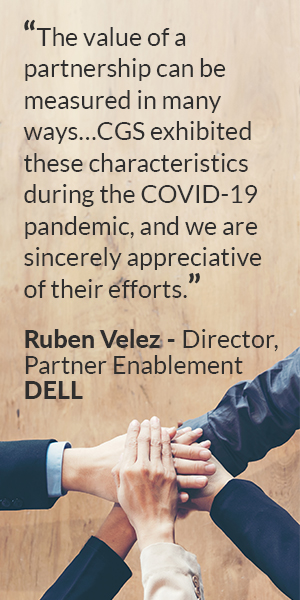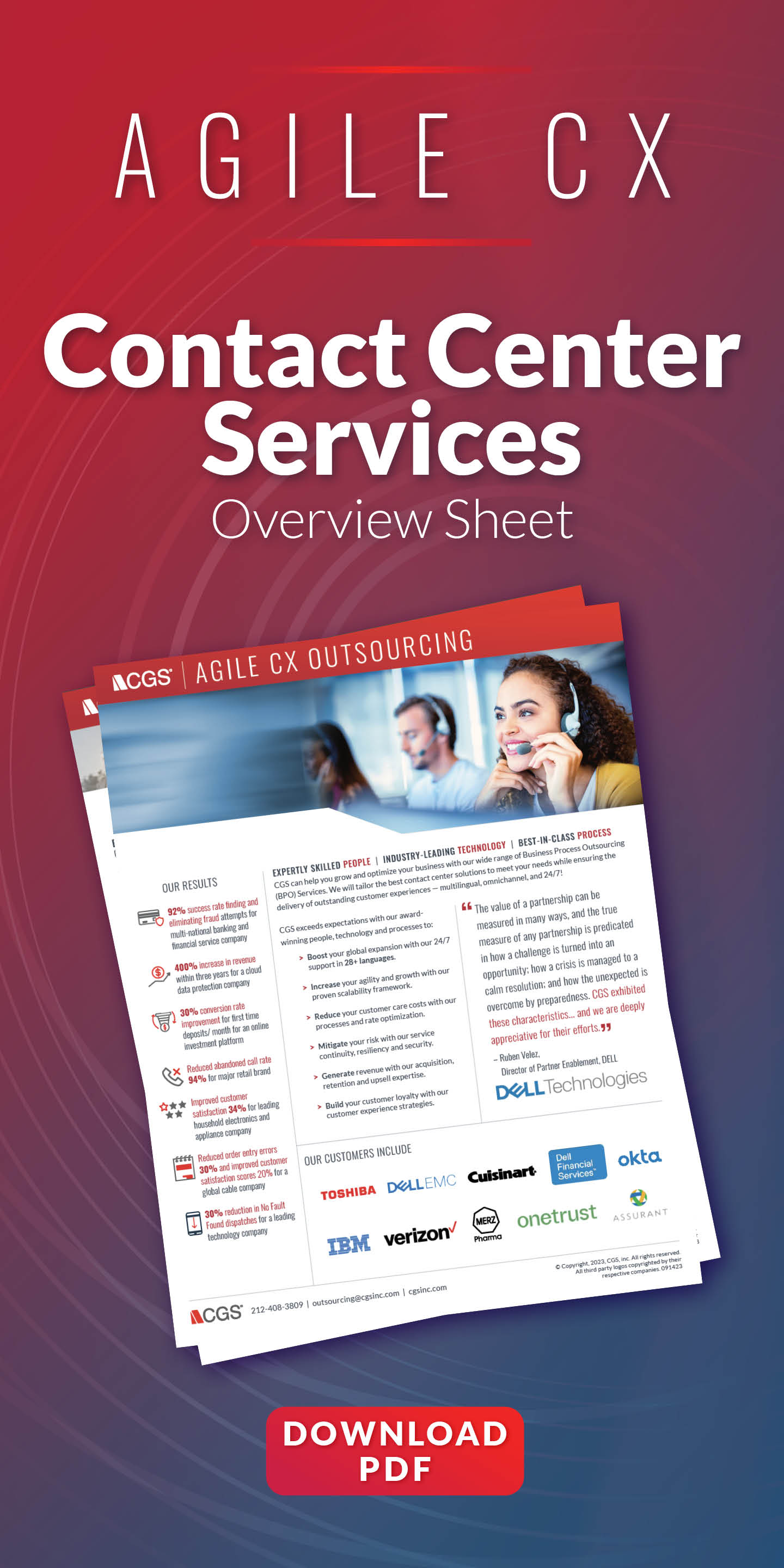Do You Understand Your Customer?

Customer Experience (CX) is a proven path to sustained growth and profitability. It makes sense – give customers and buying teams what they value, when and in the format they want it. Yet, operationalizing this simple concept continues to vex organizations.
While adoption has been slow, we’re finally heralding in the year of Customer Experience.
We’re at a critical point in the evolution of customer experience. CGS’ annual report “A Look Ahead: Business Process Outsourcing Trends in 2020”, found that companies of all sizes have as their top 2020 priorities improving customer experience and cost-effective operations.
Organizations realize the time for talk is over, and they need to ‘walk the walk.’ A prime catalyst is that prospects are quick to discern brands that do not compete on customer experience. Those brands are eliminated early on in purchase and renewal cycles.
At the core of CX adoption are two issues. The first is that customer experience requires a mind shift from viewing it as a tactic to embracing the discipline as a business strategy that touches every corner of the organization. The second is gaining an actionable, current “outside-in” understanding of the customer – the “hows” and “whys” of their actions and expectations.
The study found five trends prevalent across company sizes and over 30 industries:
- Focus on customers and costs
- Harden data security
- Strengthen in-house customer care and technical support core competencies
- Manage IT infrastructure change
- Shift technology investments
At heart is a growing focus to understand customers and the experiences they value. Companies are figuring out that customers reward brands that engage them on their terms. That means understanding how various types of customers define value along with when, how, and why they want brands to interact with them. As I’ve written about for a decade, the customer owns defining the journey, not the brand. It is the brand’s responsibility to align their strategy, people, process, and technologies to the customer’s expectations. Do that, and sustained growth is yours.
While it might seem counter-intuitive, business process outsourcing plays a more significant role in customer experience than just cost savings.
The study found that 48 percent of companies, of all sizes, have as their top strategic outsourcing the goal to ‘provide better customer experience.’ That goal cascades down the organization and is reflected in the objectives of departments that use outsourcing. For example, the primary goal of customer service and operations departments is to provide a better customer experience. For Finance, it is process standardization to improve efficiency and consistent delivery. IT departments rely on outsourcers to help them stay current on technology to meet business goals.
While every company’s needs are different, BPO providers bring expertise and resources essential to leveraging automation in customer interactions, hardening customer data security and compliance, and CX best practices from other industries. Technologies like chatbots, virtual assistants, RPA, analytics, immersive training, real-time automated coaching, and artificial intelligence are table stakes for successful CX. Yet the technology choices available can be overwhelming. What sounds good on paper or in a demo can, in reality, be challenging to integrate into a company’s enterprise ecosystem.
Knowing when and how to fit new technologies into your customer engagement strategy is one area where BPO can make a big difference. The experience of serving multiple clients across numerous industries enables BPO vendors to lead as well as teach best practices on how to satisfy customers and meet business goals.
Just as customers expect more from the brands they do business with, so too are companies demanding more from their BPO partners. As CX continues to top the list of strategic imperatives, companies are increasingly looking to their outsourcing partners for help beyond traditional services by filling an internal resource or skill gaps. Over 50 percent of study respondents said they look to their BPO partners for help in customer experience transformation, customer journey mapping, and implementing new supporting systems.
Selecting the right BPO partner is more than finding the right capabilities match – it’s about establishing a trusted, long-term relationship. At stake is the future of the customer – and your business.
The study found that companies are evaluating outsourcing partners based on how they align with the company’s vision, goals, and culture. That is in addition to a demonstrable track record of delivering ROI in the form of improved efficiencies and lower costs. Evaluating how outsourcers manage their own business is increasingly part of the selection process. How do they onboard new employees, conduct training, enforce business policies, communicate internally, and govern their business are just a few due diligence areas. Relationship ‘fit’ cannot be overstated – it is a significant determining factor in the success of the outsourcing partnership and the results realized, especially when it comes to CX goals.
The key to realizing the top and bottom-line benefits of customer experience is to align your culture, strategy, and processes outward to customer journeys then institutionalize new practices, processes, and behaviors with automation technology. While some brands still stubbornly perceive customer experience as a tactic, a marketing campaign, or a new label for the customer support function, increasingly companies embrace it as a mindset, a business strategy, and discipline that the entire organization must master.
It all starts by understanding your customers, through their eyes, in detail. BPO outsourcers can be valuable, trusted partners to gaining and operationalizing that understanding so you can use customer experience as a brand differentiator.



